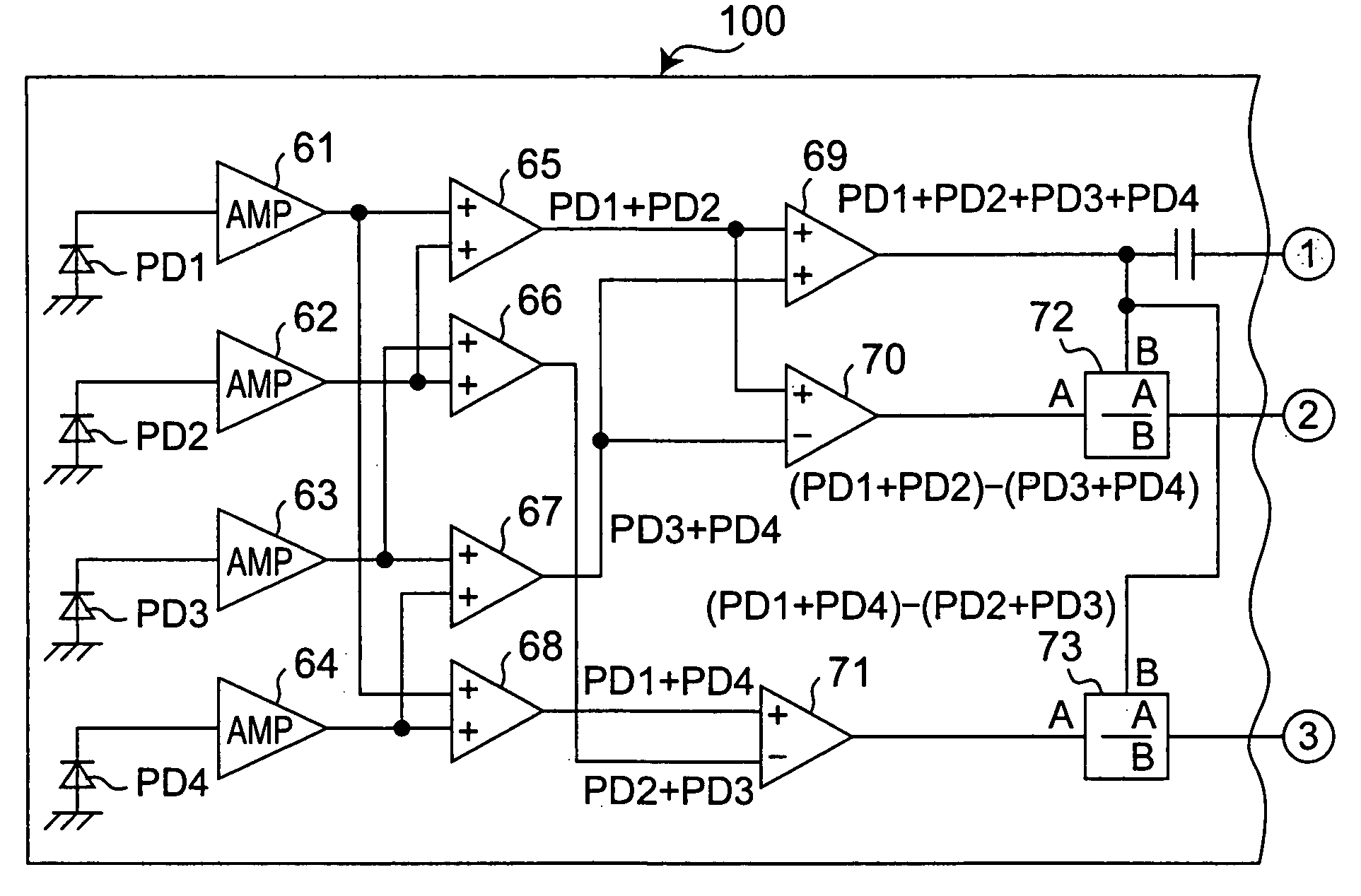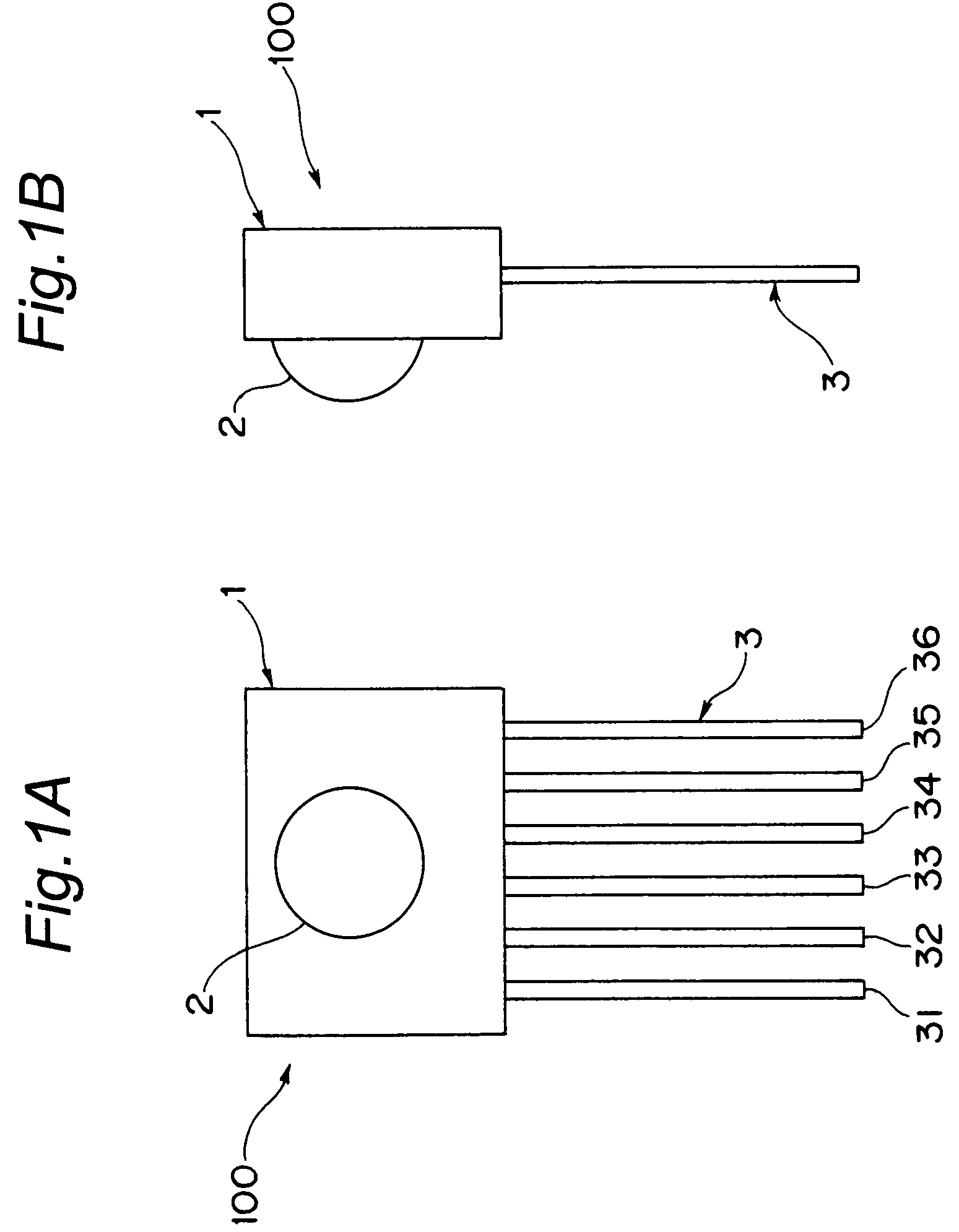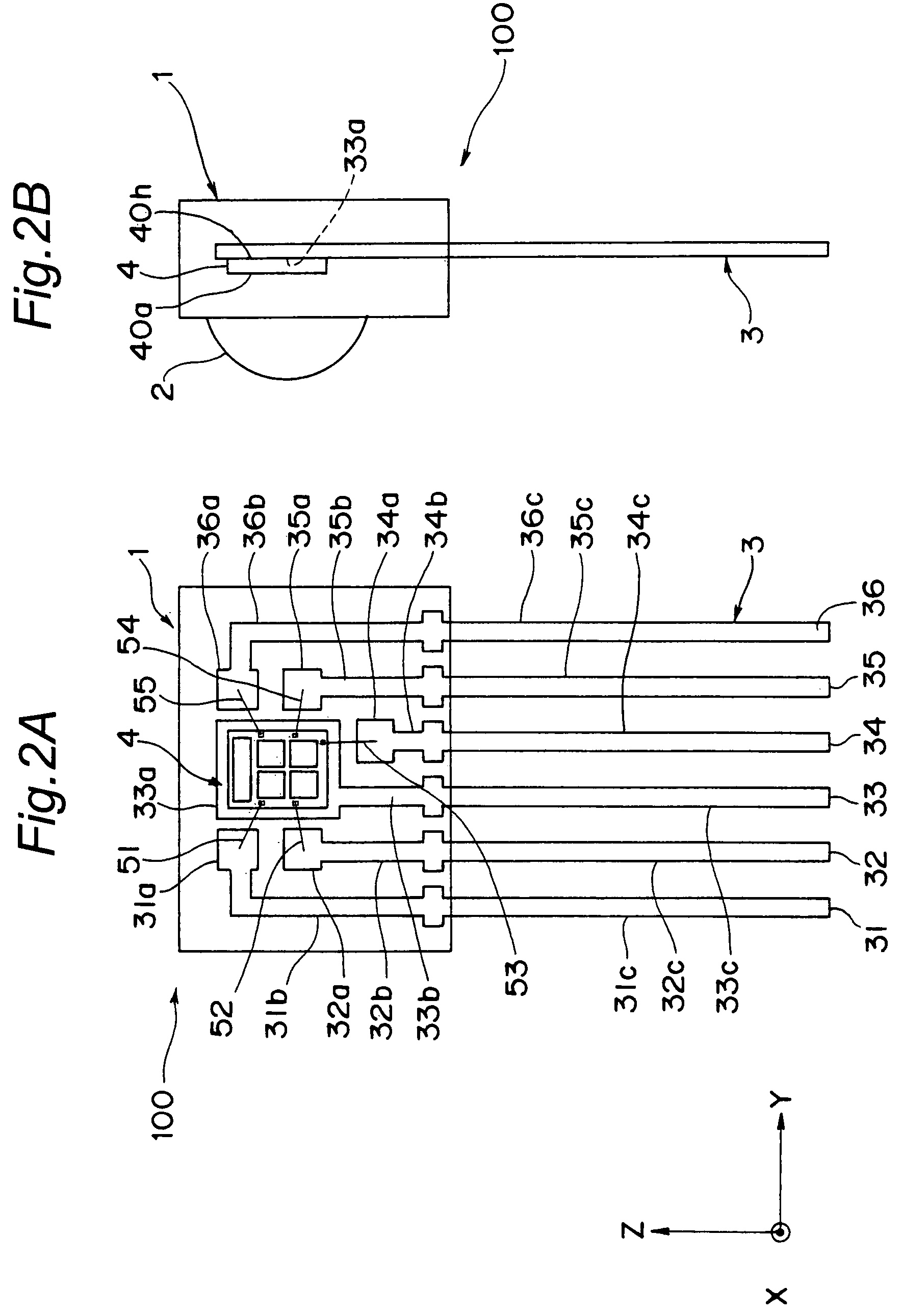[0008]Accordingly, an object of the present invention is to provide a remote control receiver which makes it possible to achieve size reduction and price reduction.
[0013]In the remote control receiver of this invention, the second signal processing circuit calculates a difference between the signals outputted by the plurality of light-receiving regions to obtain and output a directional signal representing a direction in which the incident light has been incident on the plurality of light-receiving regions. Therefore, depending on the directional signal, the direction in which the incident light has been incident with respect to the plurality of light-receiving regions is detected. Also, the first signal processing circuit adds up the signals outputted by the plurality of light-receiving regions and, based on a resulting signal, demodulates and outputs the remote control signal. Thus, the original remote control signal is obtained. In this case, since the first signal processing circuit adds up the signals outputted by the plurality of light-receiving regions, wastefulness in area of the light-receiving regions can be reduced so that the S / N ratio (signal-to-noise ratio) can be improved. Still, in this remote control receiver, since at least the plurality of light-receiving regions are housed in one common mold package, more size reduction and price reduction become achievable as compared with the prior art example.
[0016]In systems in which this type of remote control receiver is incorporated, there has been a possibility that the system may malfunction due to occurrence of a mis-recognition that an non-objective remote control signal (e.g., a remote control signal used for another system employed in the same room), when having been incident in the form of incident light, is mistaken as an objective remote control signal. In this connection, the remote control receiver of this one embodiment includes an external input terminal for turning on or off power supply to the second signal processing circuit. Therefore, for example, with the provision of an external circuit for receiving an output of the first signal processing circuit of the remote control receiver, the external circuit feeds the external input terminal a signal for turning on the power supply to the second signal processing circuit only when the first signal processing circuit outputs an objective remote control signal, while the external circuit feeds the external input terminal a signal for turning off the power supply to the second signal processing circuit when the first signal processing circuit outputs no objective remote control signal. Whether the signal is an “objective remote control signal” or not is discriminated depending on the format of the remote control signal as an example. In such a case, in this remote control receiver, even if an non-objective remote control signal has been incident in the form of incident light, the second signal processing circuit is not actuated, so that no directional signal is outputted. Therefore, even if any non-objective remote control signal has been incident in the form of incident light, the system does not malfunction. Thus, with the remote control receiver of this one embodiment, any malfunction of the system in which the remote control receiver is incorporated can be prevented.
[0023]In systems in which this type of remote control receiver is incorporated, there are some cases where only control of a uniaxial direction suffices for the control responsive to the direction in which the incident light becomes incident (i.e., a direction of the operator of the remote control transmitter). In this connection, in the remote control receiver of this one embodiment, the plurality of light-receiving regions are two light-receiving regions included in a two-element PIN photodiode, and the directional signal to be outputted by the second signal processing circuit is a signal of a uniaxial direction in which the incident light becomes incident. Therefore, the remote control receiver is suitable for a system for which only such control for a uniaxial direction suffices. That is, in the remote control receiver of this one embodiment, the separation zone (region insensitive to light) for electrically separating the light-receiving regions from each other needs only to be a smaller one. As a result, wastefulness in area of the surface of the semiconductor chip that include the two-element PIN photodiode can be reduced, allowing the S / N ratio (signal-to-noise ratio) to be most advantageous.
[0029]In the remote control receiver of this invention, since the PSD and the first and second signal processing circuits are housed in one common mold package, size reduction and price reduction become achievable.
 Login to View More
Login to View More  Login to View More
Login to View More 


